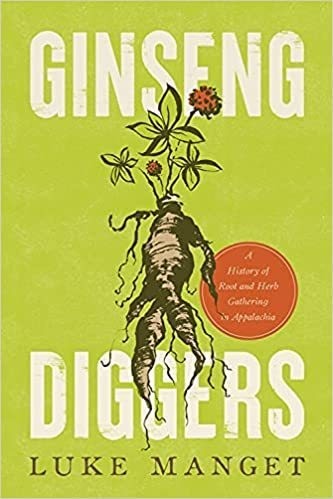Ginseng Diggers (Hardback)
A History of Root and Herb Gathering in Appalachia
Imprint: University Press of Kentucky
Pages: 304
Illustrations: 24 b&w photos, 8 maps, 4 charts
ISBN: 9780813183817
Published: 28th May 2022
Script Academic & Professional
Pages: 304
Illustrations: 24 b&w photos, 8 maps, 4 charts
ISBN: 9780813183817
Published: 28th May 2022
Script Academic & Professional
You'll be £25.00 closer to your next £10.00 credit when you purchase Ginseng Diggers. What's this?
+£4.99 UK Delivery or free UK delivery if order is over £40
(click here for international delivery rates)
Need a currency converter? Check XE.com for live rates
(click here for international delivery rates)
Need a currency converter? Check XE.com for live rates
The harvesting of wild American ginseng (panax quinquefolium), the gnarled, aromatic herb known for its therapeutic and healing properties, is deeply rooted in North America, but nowhere has it played a more important role than in the southern and central Appalachian Mountains. Made possible by a trans-Pacific trade network that connected the region to East Asian markets, ginseng was but one of several medicinal Appalachian plants that entered international webs of exchange. As the production of patent medicines and botanical pharmaceutical products escalated in the mid- to late-nineteenth century, southern Appalachia emerged as the United States' most prolific supplier of many species of medicinal plants. The region achieved this distinction due to both its biodiversity and the persistence of certain common rights that guaranteed widespread access to the forested mountainsides, regardless of who owned the land.
Following the Civil War, root digging and herb gathering became one of the most important ways landless and smallholding families earned income from the forest commons. This boom influenced class relations, gender roles, forest use, and outside perceptions of Appalachia, and it began a widespread renegotiation of common rights that eventually curtailed access to some plants such as ginseng.
Based on extensive research into the business records of mountain entrepreneurs, country stores, and pharmaceutical companies, Ginseng Diggers: A History of Root and Herb Gathering in Appalachia is the first book to unearth the unique relationship between the Appalachian region and the global trade in medicinal plants. Historian Luke Manget expands our understanding of the gathering commons by exploring how and why Appalachia became the nation's premier purveyor of botanical drugs in the late nineteenth century and how the trade influenced the way human residents of the region interacted with each other and with the forests around them.
Other titles in University Press of Kentucky...















